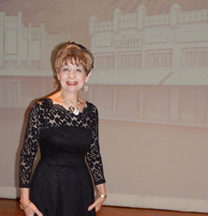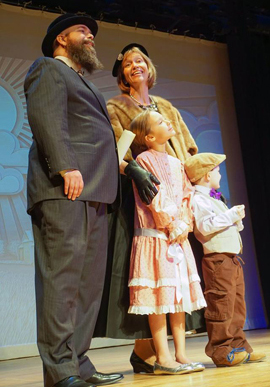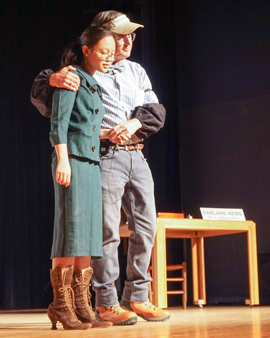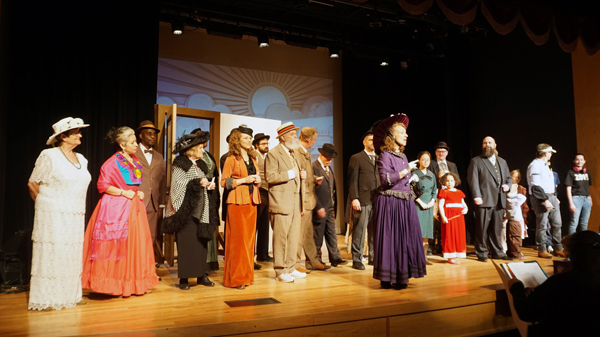A theater full of folks were entertained Saturday, April 13 at the Plaza as they watched “Becoming Garland Avenue,” a play written by Kay Moore. Her husband, Louis Moore, had mentioned that it would be great to create a musical about Garland’s history and Kay got to work and was finished in one weekend. After the script and songs were written, Kay got help from several talented folks. She and composer/pianist Bobby Orozco worked together to arrange her compositions into a music score.
“Bobby was a delight to work with,” she said. “He has a bright future and Garland should be proud to have him.”
Sarah Stafford, who Kay described as “incomparably talented,” coached the vocalists. Glynda King was masterful on the piano and Greg Baxter used his theater training and experience to direct the actors.
The cast included 11th Street neighbors, friends, family and board members of Friends of Garland’s Historic Magic 11th Street. There were also folks who grew up in Garland but moved to other areas and people who visited relatives here. The group became a family through rehearsals and shared meals.
“All the gatherings were a tremendous time of fellowship and camaraderie,” Kay said. “Everyone pulled together and genuinely wanted each other person to perform their best. Many cast members were folks who feel they owe Garland a lot and wanted to repay by giving of themselves in this musical.”
“We saw our actors grow into their roles and actually become R.O. Travis and his associates when they stepped on stage,” Kay said. “We knew that when they put on their costumes and stood in front of a sell-out crowd, that they would pull together and that’s what happened.”
The show was informative and entertaining and everyone’s hard work was evident in the final product. Even with heavy rain, Kay and Louis remembered that “This is the day that the Lord hath made,” and that He would get them through, rain or shine.
The Moores would like to see their effort become a model for what groups can do to help fill areas of need—not always going to our governing bodies with hands extended and asking “What can you do for me?” but going to them with a gift in hand saying, “Here’s what we can do for you.”
Kay said that it was heartwarming to know that so many people left the show with an expanded understanding of Garland’s history.
“Sometimes we think that we ourselves invented the wheel and don’t remember that we stand on the shoulders of and step in the footsteps of Garlandites with foresight 100 years ago and beyond,” Kay said. “We owe much to these people, but we don’t know much about them. Our goal was to educate, entertain and inspire. We believe that was accomplished.”
Another thing that was important to Kay was that the Plaza Theater was where she and her friends spent Saturday afternoons while growing up in the 1950s. The theater, with its separate entrance and balcony only seating for black patrons was the scene of much racial segregation.
“I was determined that inclusion and diversity would be an obvious theme,” Kay said. “African-American actors, who spoke of the separate conditions for blacks in 1913, were included and there was an actor of Latino origin who gave a brief history of the 1928 arrival of Garland’s first Hispanic family. Segregation would not be present at 2 p.m. Saturday, April 13, 2019, at the Plaza Theater, as it was in my childhood.”
Kay expressed gratitude for Garland’s Cultural Arts Commission and the Granville Arts Center staff as well as their volunteers.
“Our volunteers did everything from holding umbrellas at the curb on show day to providing meals for actors to moving props. They were blessings beyond compare,” Kay said.





